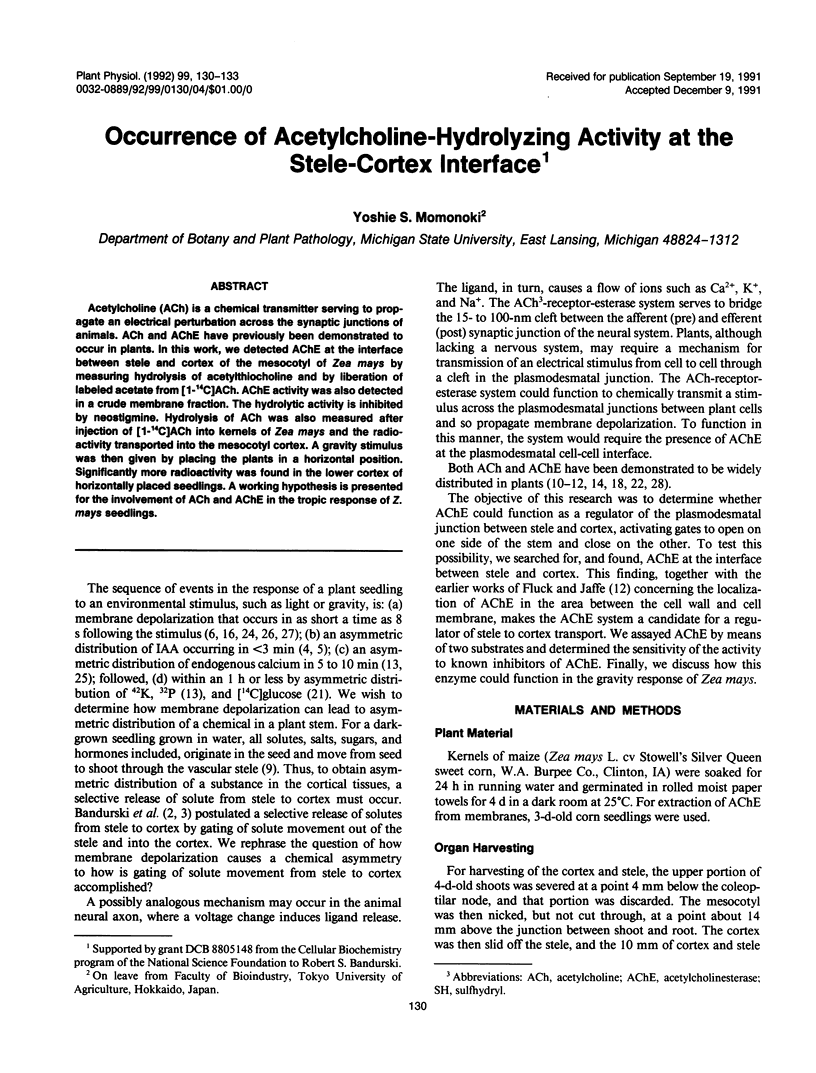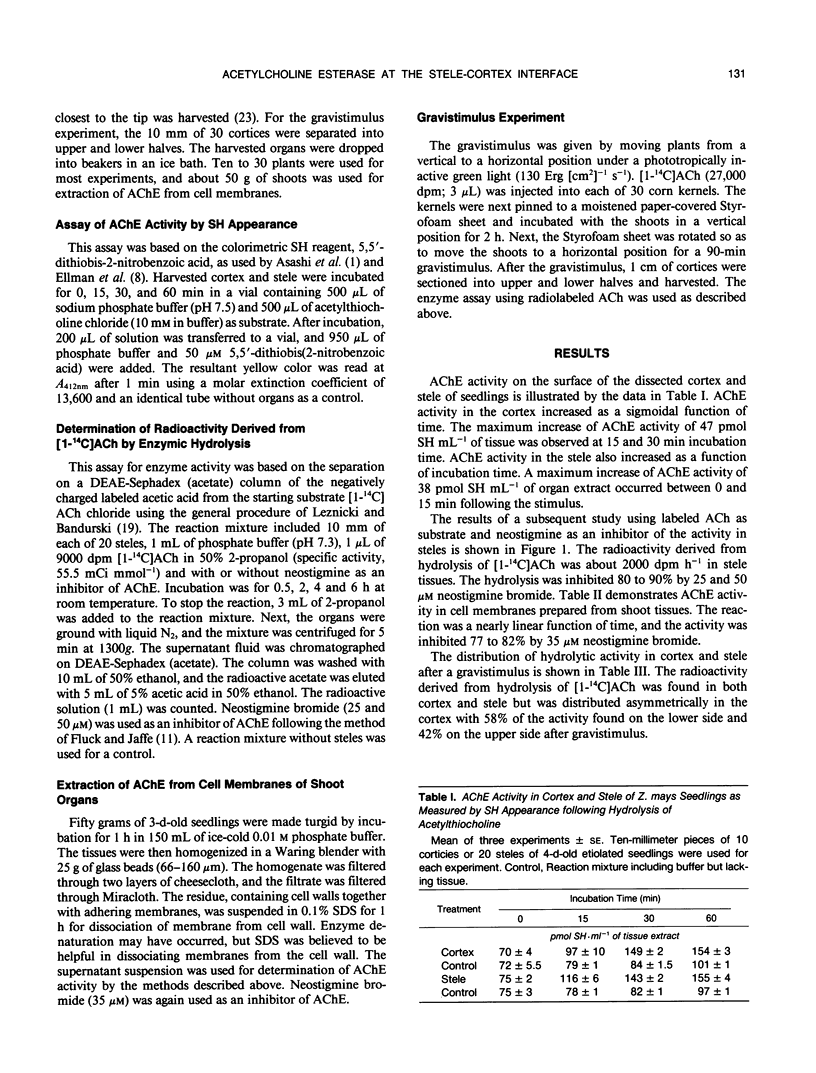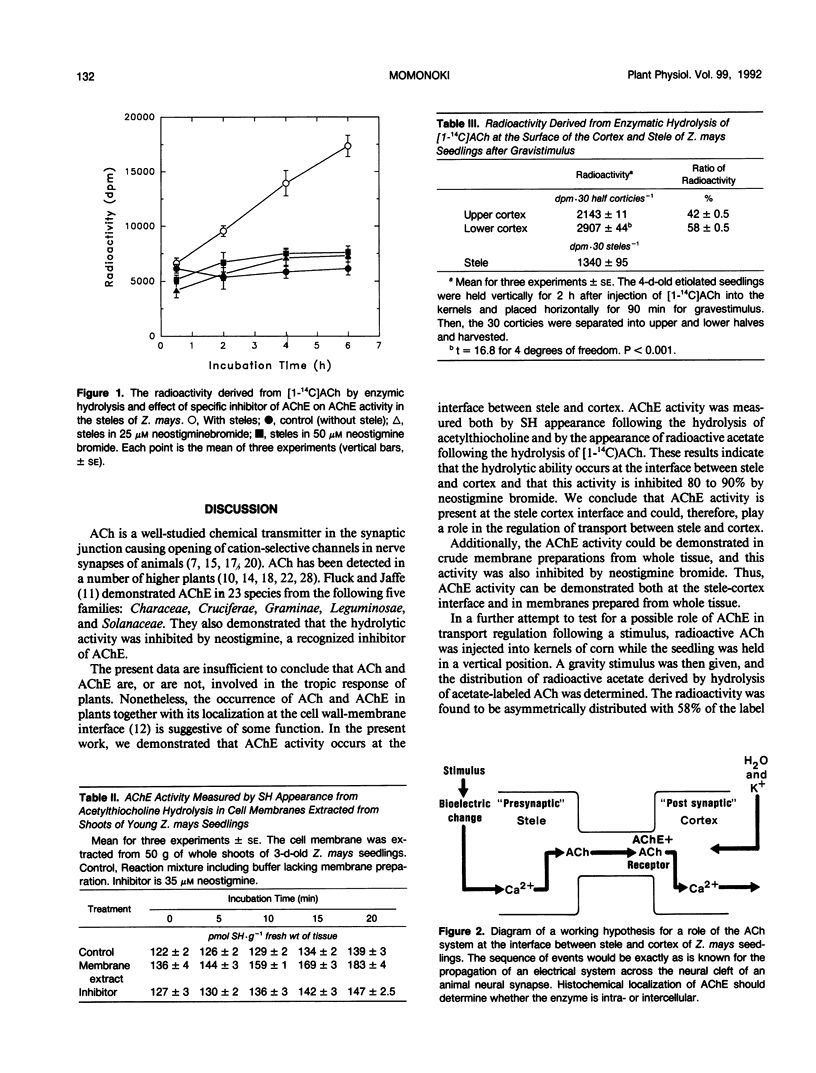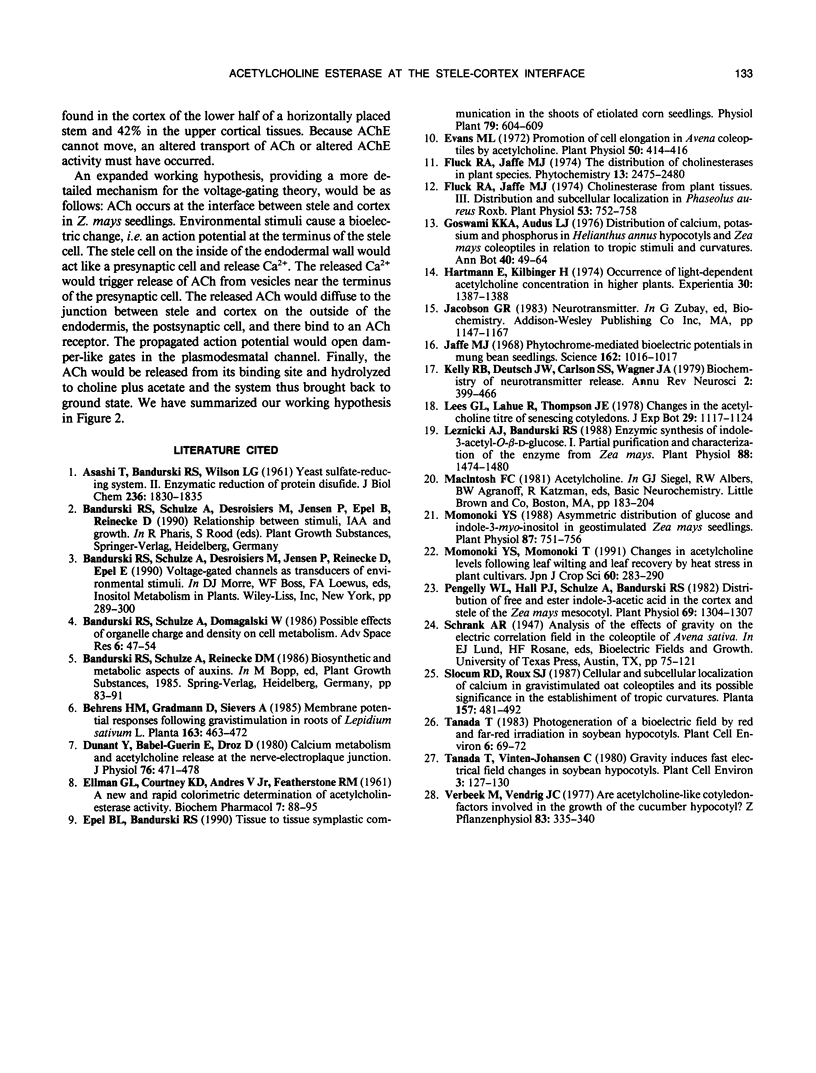Abstract
Acetylcholine (ACh) is a chemical transmitter serving to propagate an electrical perturbation across the synaptic junctions of animals. ACh and AChE have previously been demonstrated to occur in plants. In this work, we detected AChE at the interface between stele and cortex of the mesocotyl of Zea mays by measuring hydrolysis of acetylthiocholine and by liberation of labeled acetate from [1-14C]ACh. AChE activity was also detected in a crude membrane fraction. The hydrolytic activity is inhibited by neostigmine. Hydrolysis of ACh was also measured after injection of [1-14C]ACh into kernels of Zea mays and the radioactivity transported into the mesocotyl cortex. A gravity stimulus was then given by placing the plants in a horizontal position. Significantly more radioactivity was found in the lower cortex of horizontally placed seedlings. A working hypothesis is presented for the involvement of ACh and AChE in the tropic response of Z. mays seedlings.
Full text
PDF



Selected References
These references are in PubMed. This may not be the complete list of references from this article.
- ASAHI T., BANDURSKI R. S., WILSON L. G. Yeast sulfate-reducing system. II. Enzymatic reduction of protein disulfide. J Biol Chem. 1961 Jun;236:1830–1835. [PubMed] [Google Scholar]
- Bandurski R. S., Schulze A., Domagalski W. Possible effects of organelle charge and density on cell metabolism. Adv Space Res. 1986;6(12):47–54. doi: 10.1016/0273-1177(86)90065-7. [DOI] [PubMed] [Google Scholar]
- Dunant Y., Babel-Guéin E., Droz B. Calcium metabolism and acetylcholine release at the nerve-electroplaque junction. J Physiol (Paris) 1980 Sep;76(5):471–478. [PubMed] [Google Scholar]
- ELLMAN G. L., COURTNEY K. D., ANDRES V., Jr, FEATHER-STONE R. M. A new and rapid colorimetric determination of acetylcholinesterase activity. Biochem Pharmacol. 1961 Jul;7:88–95. doi: 10.1016/0006-2952(61)90145-9. [DOI] [PubMed] [Google Scholar]
- Epel B. L., Bandurski R. S. Tissue to tissue symplastic communication in the shoots of etiolated corn seedlings. Physiol Plant. 1990;79:604–609. [PubMed] [Google Scholar]
- Evans M. L. Promotion of cell elongation in Avena coleoptiles by acetylcholine. Plant Physiol. 1972 Sep;50(3):414–416. doi: 10.1104/pp.50.3.414. [DOI] [PMC free article] [PubMed] [Google Scholar]
- Fluck R. A., Jaffe M. J. Cholinesterases from Plant Tissues: III. Distribution and Subcellular Localization in Phaseolus aureus Roxb. Plant Physiol. 1974 May;53(5):752–758. doi: 10.1104/pp.53.5.752. [DOI] [PMC free article] [PubMed] [Google Scholar]
- Jaffe M. J. Phytochrome-mediated bioelectric potentials in mung bean seedlings. Science. 1968 Nov 29;162(3857):1016–1017. doi: 10.1126/science.162.3857.1016. [DOI] [PubMed] [Google Scholar]
- Kelly R. B., Deutsch J. W., Carlson S. S., Wagner J. A. Biochemistry of neurotransmitter release. Annu Rev Neurosci. 1979;2:399–446. doi: 10.1146/annurev.ne.02.030179.002151. [DOI] [PubMed] [Google Scholar]
- Leznicki A. J., Bandurski R. S. Enzymic synthesis of indole-3-acetyl-1-O-beta-d-glucose. I. Partial purification and characterization of the enzyme from Zea mays. Plant Physiol. 1988;88:1474–1480. doi: 10.1104/pp.88.4.1474. [DOI] [PMC free article] [PubMed] [Google Scholar]
- Momonoki Y. S. Asymmetric distribution of glucose and indole-3-acetyl-myo-inositol in geostimulated Zea mays seedlings. Plant Physiol. 1988;87:751–756. doi: 10.1104/pp.87.3.751. [DOI] [PMC free article] [PubMed] [Google Scholar]
- Pengelly W. L., Hall P. J., Schulze A., Bandurski R. S. Distribution of Free and Ester Indole-3-Acetic Acid in the Cortex and Stele of the Zea mays Mesocotyl. Plant Physiol. 1982 Jun;69(6):1304–1307. doi: 10.1104/pp.69.6.1304. [DOI] [PMC free article] [PubMed] [Google Scholar]


